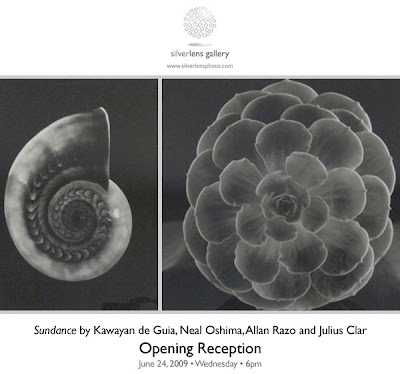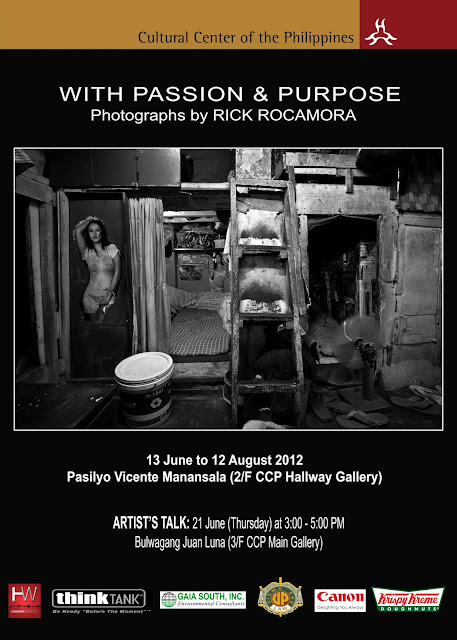SUNDANCE

 SUNDANCE
SUNDANCE by Kawayan de Guia, Neal Oshima, Julius Clar and Allan Razo,
Silverlens Gallery
June 24, 2009, WED, 6-9pm
Silverlens Gallery proudly presents Sundance, a collection of photograms by Kawayan de Guia, Neal Oshima, Allan Razo and Julius Clar. The artists take a back-to-basics approach and utilize alternative photographic processes--Platinum Prints, Cyanotypes, Kallitypes (Vandyke Prints) and Gum Bichromate Prints--that antedate the first silver gelatin photographs by more than a century.
Amid the digital age, of hyper-progression and technological advancement, de Guia, Oshima, Razo and Clar take a retro step to the most basic and organic of photographic processes using the sun as their 'darkroom'. Each process is an arduous one, subject to uncontrollable variables that demand fastidious experimentation. Each uniquely imperfect print is a suggestive abstraction of its original subject, this artisanal nature contributes to its longevity.
Sundance is about contemporary interest in the archaic processes that were developed at the birth of photography. It has been suggested that the alternative process movement is a reaction to the anti-photography esthetic of post-modernist art. It has also been noted that the widespread interest in processes like the Daguerreotype, glass-plate collodion, albumen printing, camera obscura, etc. coincided with the advent of digital photography. It should be further noted that with the predominance of digital imagemaking even silver-gelatin printing, analogue black and white or color photography conducted in a darkroom, could now be considered an alternative process.
For a contemporary photographer exploration of these processes is a
combination of archeology and alchemy. Ancient techniques must be researched in archaic tomes and unstable potions must be mixed in near darkness. Obscure papers must be procured, cut, sized and carefully handcoated with light-sensitive solutions. In this respect it is the very opposite of digital photography and for some of its most passionate adherents this is possibly its greatest attraction.
Others are attracted by the tremendous diversity that these processes offer. Digital photography, for all of its ease of use, tends to produce prints that look very much the same, particularly when compared to the range of images produced by these archaic means. Some find the evidence of the hand of the artist in the final print and the unrepeatable nature of many of the techniques deeply satisfying. Platinum and palladium printing, for example, offer a tonality that even the most technically sophisticated digital printers have yet to match.
For the collector, when the guaranteed lifespan of an inkjet print is a few decades, these prints offer proven longevity. Excellent prints from the earliest days of the medium remain. Many of these processes are as archivally stable as the paper that they are printed on. But, for a contemporary collector, their real value is their unique beauty, expressed through the vision and craft of the artist who made them.
—Neal Oshima, June 2009
Sundance by Kawayan de Guia, Neal Oshima, Allan Razo and Julius Clar opens at 6 pm in Silverlens Gallery on June 24 and runs until the July 25, 2009.
For inquiries, contact Silverlens Gallery at 2/F YMC Bldg. II, 2320 Pasong Tamo Ext., Makati, 816-0044, 0905-2650873, or manage@silverlensphoto.com. Gallery hours are Monday to Friday 10am–7pm and Saturdays 1–6pm. www.silverlensphoto.com.
Image: Detail, Allan Razo, Shell 3, 2005, and Cactus, 2004


Comments